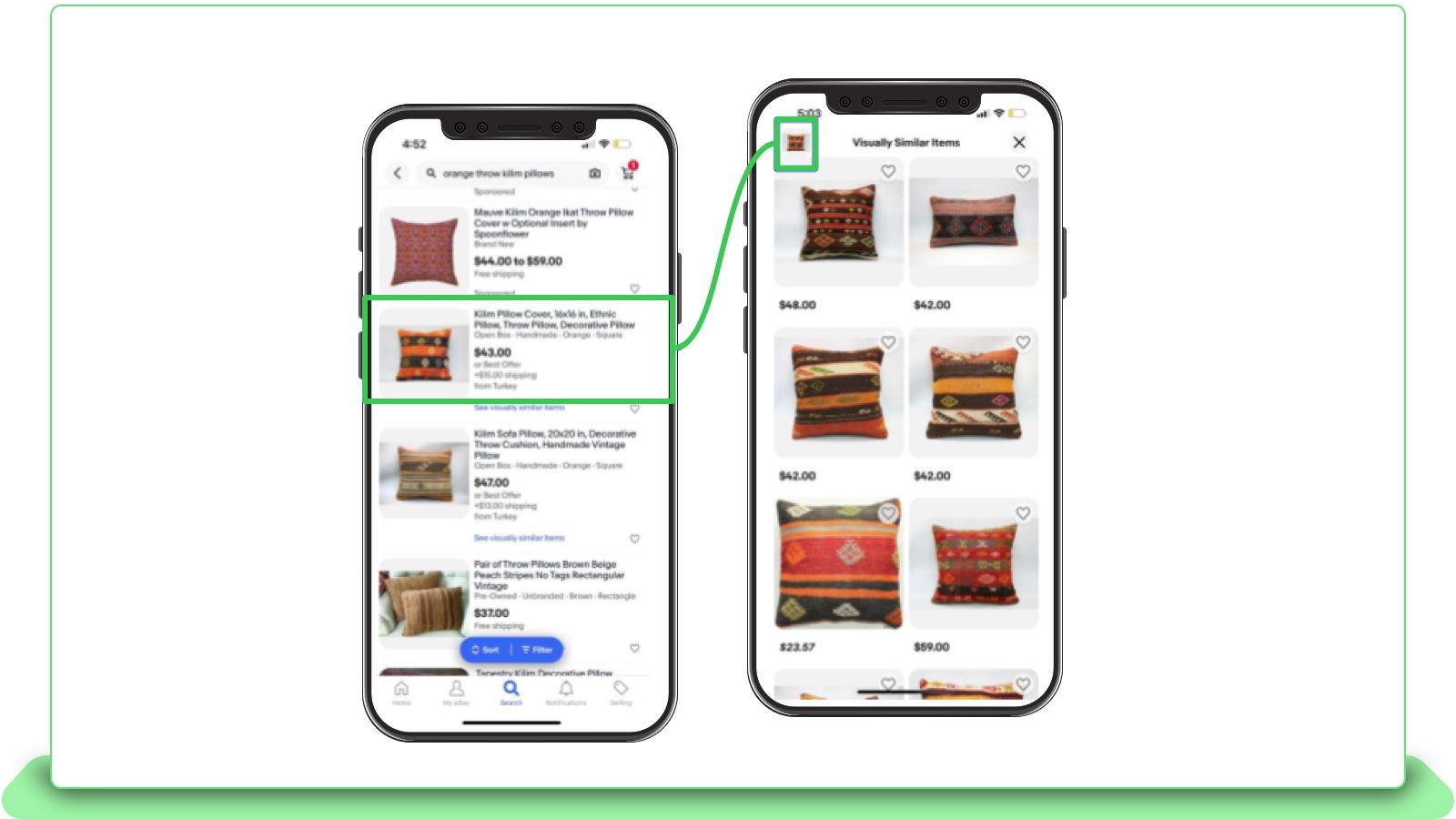eBay Tests Digital "Window Shopping" Feature In Select Categories
eBay's latest test to improve the search and browse experience aims to replicate window shopping with computer vision and machine learning.

A new feature generates customer delight by using modern computer vision techniques to drive new search paradigms through visual discovery.
We live in a world of discovery where visual appetite reigns supreme. Window shopping, infinite scroll lists, and micro engagements using simple visual cues are the norm. Search engines traditionally interpret a textual query input and match items and/or documents ranked by their relevance to the input query. The relevance of the retrieved results is based on scoring the closeness of the input query to the matching items/documents.
This traditional approach heavily constrains the user to provide a language-bounded interpretation of their implicit preferences such as style and aesthetic feel, which are not usually available in a shared vocabulary. Bridging this gap between inspiration and discovery by enabling visual first pivots in search is the goal of our work.
The eBay tech blog goes on to explain that text based search sometimes provide too wide of a variation in results, so a more visual approach to narrowing in on exactly what the user is looking for is needed
Let’s illustrate this with an example. A user has an ethnic Turkish themed living room and is looking to purchase pillows for their recently purchased butterscotch-colored couch. In tune with their personal style, the user starts off their search using “turkish throw pillow,” reviews the results and in the process identifies the specific pattern used in pillows from Turkey as “kilim.”
They attempt to search for this pillow using various combinations of textual queries such as “orange kilim pillows,” “orange throw kilim pillows” or even a broad search “kilim pillows” (results in Figures 1 and 2) which does not yield their desired result in the top results.
Though the results were highly relevant and had the best match with the query text which has been provided, the result of matching items varies significantly for each of these queries, as all of the inventory is not being displayed, forcing the user to query over and over again to try and get the correct combination of query text. Thus, words fail to elicit the style preference that the buyer has intended to search for.
In such situations, we need to provide capabilities to help engage enthusiast customers by inviting them to browse their assortment in a more visually appealing methodologies allowing them to zero down on the item they love.
The solutions is a "see visually similar items" function that leverages image recognition and machine learning to enhance the browsing experience, currently being tested in Furniture and Home Decor categories.
Looking back at the original example of the “kilim pillows,” the user now has the ability to browse through the search results and provide a visual cue for further exploration with a single click using the “See visually similar items” link.
This brings the vast inventory of similar style and preferences within the control of the user’s choice and helps them easily identify their intended item without the need to provide textual representation of their preferences. This allows them to hone in on a specific set of closely related items in terms of style, aesthetics, fashion trends and more, opening the doors for completely novel discoveries of undiscovered inventory.
This functionality has already been enabled for a few categories where visual search experiences prove a key enabler, such as Furniture and Home Decor, and will be available for other categories — and all users — in the next few months.
Search and browse functionality has been top of mind for eBay lately - many users have experienced frustrating glitches and problems with search in recent months and eBay's careers page shows they are making solving search a priority in hiring despite last months layoffs.

Unfortunately, the tech-led reimagination of the platform is still crawling along at a snail's pace with no truly exciting innovation on the horizon and eBay still lags far behind other marketplaces in this area.
Meanwhile, Shopify was one of the first companies to sign on to OpenAI's new API offering, bringing a ChatGPT powered shopping assistant to both their app and web experiences.

What do you think of eBay's "search visually similar" functionality? Let us know in the comments below!


















